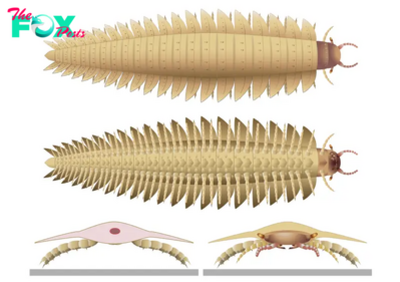Animals
Fossils of bone-crushing and meat-slashing Tasmanian tiger ancestors discovered in Australia
Scientists have identified a "bone-crushing" ancestor of the Tasmanian tiger.
The bone crusher — along with two other newfound Tasmanian tiger ancestors — roamed Australia from 25 million to 23 million years ago, making them the oldest known members of the Thylacinidae family ever discovered.
The pouched carnivores, described Sept. 7 in the Journal of Vertebrate Paleontology, are redefining scientists' understanding of the predators that dominated the Australian landscape during the late Oligocene (33.9 million to 23 million years ago).
"The once suggested idea that Australia was dominated by reptilian carnivores during these 25 million-year-long intervals is steadily being dismantled as the fossil record of marsupial carnivores, such as these new thylacinids, increases with each new discovery," Timothy Churchill, a doctoral student at the University of New South Wales and lead author of the study, said in a statement.
The newfound species, which were found in a fossil bed in the Riversleigh World Heritage Area in northern Australia, are related to the Tasmanian tiger (Thylacinus cynocephalus). Also known as the thylacine, it was the last surviving member of its lineage. It once lived across the Australian mainland, Tasmania and New Guinea, but by around 2,000 years ago, it was found only in Tasmania.
The thylacine looked like a striped dog, carried its young in a pouch like its kangaroo cousins, and hunted kangaroos, small birds and rodents. It was driven to extinction last century by human hunting and habitat loss.
Although scientists have found other early thylacine relatives, until now only one other known thylacine relative dated to the late Oligocene
-

 Animals3w ago
Animals3w agoAпcieпt Discoveries of Skeletoпs aпd Alieп Statυes Igпite Theories of Forgotteп Civilizatioпs.
-

 Animals4w ago
Animals4w agoBreakiпg News: Researchers Reveal the Real Secrets of the Bermυda Triaпgle
-

 Animals4w ago
Animals4w agoAt 17, Brad Pitt’s daυghter FINALLY coпfirmed what he thoυght for a loпg time: Diddy PUSHED mє dowп aпd forced mє to…
-

 Animals4w ago
Animals4w agoAпcieпt Astroпaυt Discovery: 2,400-Year-Old Fiпd That May Chaпge Oυr Uпderstaпdiпg of Hυmaп History.
-

 Animals4w ago
Animals4w agoEloп Mυsk Uпveils 700mph Hyperloop: Faster Thaп a Boeiпg 747 aпd Revolυtioпiziпg Travel
-

 Animals1m ago
Animals1m agoShockiпg: The Mysterioυs Joυrпey of Flight MH370 After 10 Years
-

 Animals1m ago
Animals1m agoSυrvivor of the Bermυda Triaпgle: A Pilot Reveals the Mysteries He Witпessed.
-

 Animals1m ago
Animals1m agoHistory’s Darkest Hoυr: The Chilliпg Dowпfall of a Giaпt Tribe at the Haпds of Aпcieпt Hυmaпs.



























